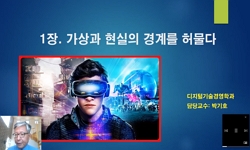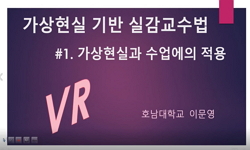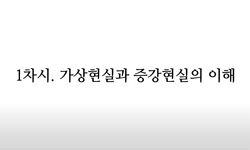본 논문은 2018년 이후의 연구자의 작업 분석을 목적으로 한다. 연구자의 작업은 개인적인 순간(瞬間)을 목격하고 이를 아카이빙(archiving)하는 과정으로부터 시작되었다. 이 과정은 현재의 순...
http://chineseinput.net/에서 pinyin(병음)방식으로 중국어를 변환할 수 있습니다.
변환된 중국어를 복사하여 사용하시면 됩니다.
- 中文 을 입력하시려면 zhongwen을 입력하시고 space를누르시면됩니다.
- 北京 을 입력하시려면 beijing을 입력하시고 space를 누르시면 됩니다.
<모멘트리움> 프로젝트에 나타난 '순간'의 표현에 대한 연구 = A Study on the Expression of ‘Moment’ in the Momentrium Project
한글로보기부가정보
국문 초록 (Abstract)
본 논문은 2018년 이후의 연구자의 작업 분석을 목적으로 한다. 연구자의 작업은 개인적인 순간(瞬間)을 목격하고 이를 아카이빙(archiving)하는 과정으로부터 시작되었다. 이 과정은 현재의 순간이 기억으로 저장되거나 과거로 잠식되어 잊혀져가는 유한한 현실에 도전하려는 연구자의 욕망에서 비롯된 것으로, 이 순간들을 기록한 상태 그대로 현실에 체화하여, 그 순간에 생성된 아카이브를 언제든 다시 환원시켜 재생할 수 있는 상태로 만들고자 하는 고민으로부터 발생되었다. 이것은 실현 불가능한 것들을 포착하고자 하는 인간의 본능적인 집착과 의지의 표현과 연결되며, 연구자 본인을 둘러싼 세계와 그 안에서의 본인의 삶에 대한 유한성의 집착으로 이해될 수 있다.
많은 동시대 예술가들은 연구자와 같이 이전의 어떤 시대보다도 개인의 특수성(特殊性)이 반영된 삶의 형태를 적극적으로 예술에 개입시키며, 자신의 삶을 체화된 형태로 표현하려고 적극적으로 시도한다. 이러한 맥락으로 일상적 시간의 연속성을 예술적 형태로 그려내는 일상 기록의 예술이 개념미술의 한 영역으로 나타나고 있다.
연구자도 동시대 예술가들 중 한 사람으로서, 2007년부터 진행한 연구자의 삶에서 나타나는 물리적인 변화에 반응하는 정신적 요소, 실재적인 것과 비실재적인 것, 현존하는 것과 현존하지 않는 것, 무의식과 의식 사이의 틈에서 발현되는 특징들을 드로잉, 레진으로 제작한 부조, 투과성을 지닌 조각 그리고 텍스타일을 활용한 설치와 퍼포먼스 등 다양한 매체를 통해 탐구하였다. 이 과정을 통해 연구자는 인간이라는 존재에게 각기 다르게 주어진, 특수성을 지닌 시간의 의미를 되새기고 그것을 이미지화하는 데 주목하였다. 이러한 과정에서 비정형적 형태의 드로잉과 조각, 신경세포나 바다 생물체의 형상과 동적 움직임이 연상되는 설치작업, 투과성을 지닌 매체의 실험을 통해 겹겹이 중첩되는 시간성을 시각적 형태로 재현하고자 시도하였으며, 이 과정에서 연구자 작품의 형태와 매체 선택의 독특함을 확인할 수 있었다.
이러한 우연한 반응에 의해 출몰하는 내재적인 요소들을 이미지화하는 과정이 진행되는 동안, 연구자는 본인이 경험한 미시적인 시간의 조각, 즉 일상적인 ‘순간’을 사유하고 탐구하게 되었다. 순간에 대한 탐구 과정의 시작은 ‘순간의 사유와 탐색이 가능할까?’라는 의문으로부터 ‘비실재적인 순간의 시각화는 과연 진정한 순간의 현실화된 표현인가?’라는 문제에 도달하였으며, 이는 더 나아가 ‘순간을 어떻게 조우할 것인가?’, ‘어떠한 실천으로서 이 순간에 접근할 것인가?’라는 보다 실천적인 물음으로 귀결되었다.
이 물음들에 대한 답을 찾기 위해 연구자는 2018년부터 ‘모멘트리움(Momentrium)’ 프로젝트를 통해 순간에 대한 조형적 연구를 시작하였다. 포스트모던 이후의 예술이 조형이라는 자체 문제에 천착(穿鑿)하는 것을 넘어서, 문제 제기적인 활동이라는 점에서 연구자의 작업은 단순히 순간을 재현하거나 추상하는 것이 아니라, 순간에 대한 사유의 실체화 가능성을 탐색하는 과정을 보여준다. 연구자가 본 연구의 소재로 사용한 ‘순간’은 일시적인 한때로서 찰나적 순간을 의미한다. 이는 물리적으로 고정시키거나 목격할 수 없는 성질의 것으로 데리다가 말하는 유령의 특성과 비견할 수 있다고 판단하였다. 데리다(Jacques Derrida)는 유령(spectre)을 과학적이거나 현실성을 갖는 혹은 객관성을 띄는 모든 대립으로 빚어진 이원적 개념들을 일정한 방식으로 초과하는 양가적 속성을 지닌다고 제시한다. 이러한 유령의 속성을 밝히기 위해 유령의 논리, 즉 유령성(Hauntology) 및 해체주의적 방법론을 기반으로 이중적인 것들을 가능하게 하는 유령적 특성을 제안하였다. 이러한 유령의 특성 중 유령이 정신과 관계하며, 양가적 틈에서 출몰하며, 언제든 그 틈에서 회귀할 수 있는 존재이자 가변적이라는 점을 바탕으로 유령과 ‘순간’ 간의 개념적 유사점을 도출하고 연구자만의 순간의 성질을 정의하고 해석하였다. 또한 이를 바탕으로 모멘트리움의 구성요소인 순간의 개념을 모색한다. 이와 관련하여 순간의 시각화 과정으로서 기록-아카이브 방식에 주목하고, 온 카와라와 로만 오팔카의 작품 세계를 살핀다.
기존의 작품과 차별화된 연구자의 프로젝트는 텍스트와 드로잉의 조형적 결합을 나타내는 ‘기록 이미지’로부터 출발한다. 이는 순간을 목격하는 것으로서의 재현을 넘어 순간을 현실화(現實化)하는 순간의 입체적 구현으로 진전되었으며, 회화적으로 표현된 시각 인덱스의 설정, 입체 조각과 설치, 가상현실로의 매체로 구체화되었다. 일련의 과정은 ‘모멘트리움’이라는 연구자의 최종적인 주제 의식을 구현해 나가는 것으로 설명된다.
이와 관련하여 본 연구의 과제를 크게 세 가지로 설정할 수 있다. 첫 번째 과제는 순간의 조형적 구현이라는 작품의 주제와 작업의 본질에 관해 밝히는 것이다. 이를 위해 연구자가 작품을 통해 어떻게 순간을 다루고 구현하는지를 다각도로 분석하고 설명한다. 두 번째 과제는 시간성을 지닌 순간을 어떻게 목격하고 기록하여 표현하는지를 다루는 것이다. 이 과정에서 연구자의 순간을 기록하는 방식과 다양한 매체를 면밀하게 분석하여 연구자의 표현 방식을 소개한다. 세 번째 과제는 조형적인 방식을 통해 순간에 영원성을 부여하는 방법에 대한 것이다. 연구자가 ‘모멘트리움’을 구현해 내는 과정에서 창작한 작품들의 구체적인 분석을 통해 어떻게 순간을 조형화하고 시간을 초월한 영원성을 부여하는지를 탐구한다.
연구자가 수행한 일련의 창작 과정은 그 자체가 ‘순간’에 대한 아카이브로 기능한다. 연구의 최종 목적인 ‘모멘트리움’을 지향하는 과정과 그 결과는 순간의 아카이브를 언제든 다시 복귀시켜 재생할 수 있는 세계를 창조하고자 하는 영원한 순간에 대한 지향으로 설명된다. 이렇듯 영원이라는 유토피아를 가상의 시공간에 현실화하는 ‘모멘트리움’의 지향은 연구자뿐 아니라 작품의 감상자에게도 연구자의 삶을 각자 재해석하고, 자신의 삶에서 마주하는 수많은 순간들에 대한 고찰을 위한 계기를 제공한다는 점에서 미적 실천을 이끌어내는 유의미한 행위로 기능한다.
다국어 초록 (Multilingual Abstract)
This doctoral research aims to analyze the work of the researcher since 2018. The researcher's work stemmed from witnessing personal moments and archiving them. This process originated from the researcher's desire to challenge the finite reality where...
This doctoral research aims to analyze the work of the researcher since 2018. The researcher's work stemmed from witnessing personal moments and archiving them. This process originated from the researcher's desire to challenge the finite reality where current moments either fade into memories or are engulfed by the past. It emerged from the researcher's aspiration to manifest these moments as recorded archives in their original state, aiming to bring them back to life whenever desired. This quest aligns with humanity's inherent inclination and determination to capture the unattainable, entwined with the researcher's obsession with the finite nature of their life within their surrounding world.
Many contemporary artists, like the researcher, actively involve their individual uniqueness in art more than any previous era. They deliberately integrate their lives into art, attempting to express their lives in an embodied form. In this context, the art of depicting the continuity of everyday time in an artistic form emerges as a realm of conceptual art.
As a contemporary artist, the researcher has explored various mediums such as drawings, resin-made reliefs, translucent sculptures, installations employing textiles, and performances since 2007, responding to the physical changes observed in their life. These explorations traverse the realms of the mental facets reacting to physical transformations, the tangible versus intangible, existence versus non-existence, and the characteristics manifested in the gap between the conscious and unconscious realms. Throughout this process, the researcher focused on revisiting and visualizing the significance of time, characterized by uniqueness inherent to each human being’s existence. This journey involved creating nonconventional forms of drawings and sculptures, installations evoking neural cells or marine organisms' shapes and dynamic movements, and experimenting with translucent mediums to visually reproduce the overlapping temporality, thus showcasing the distinctiveness of the researcher's work in form and medium selection.
In the course of visualizing the inherent elements emerging from these coincidental responses, the researcher delved into pondering and exploring the microscopic fragments of time—everyday 'moments' experienced personally. The exploration of these moments commenced with the question of whether 'rationalizing and exploring moments is possible,' leading to a contemplation on whether 'visualizing intangible moments truly embodies the essence of those moments.' Further introspection ensued, contemplating on 'how to encounter these moments' and 'what practical actions lead to accessing these moments.'
To seek answers to these questions, the researcher initiated a sculptural study of moments through the 'Momentrium' project starting in 2018. As art after the post-modern is a campaign of raising questions, transcending the researching of the problem of sculpture itself, the researcher's work showcases an explorative process of the materialization of reasoning about moments, transcending mere reproduction or abstraction of moments. The 'moment' chosen as the subject of this study represents a fleeting instance, a temporary moment in time. Recognizing its nature as something physically unfixable or unobservable, it was likened to the characteristics of a specter, as described by Jacques Derrida. Derrida presents the specter as having ambivalent attributes, transcending binary concepts stemming from oppositions that are scientific, realistic, or objective, with a consistent method. To elucidate these attributes, the logic of the specter, namely "hauntology," was proposed, suggesting the ghostly features that enable duality based on deconstructive methodology. Drawing from the specter's traits—its connection to the mind, emergence from the gap of duality, ability to reappear from these gaps, and its variable nature—a conceptual similarity between the specter and the 'moment' was derived. The researcher defined and interpreted the nature of moments unique to themselves based on this exploration, further probing the concept of moments, the building blocks of Momentrium. In relation to this exploration, attention was given to the visualization process of moments, exploring the recording-archiving method and examining the artistic worlds of On Kawara and Roman Opalka.
The researcher's distinct project diverges from conventional artwork, initiating from the amalgamation of text and drawing into 'record images.' Evolving beyond the mere representation of witnessing a moment, these images advance towards the three-dimensional embodiment of actualizing a moment, manifested through painterly visual indices, three-dimensional sculptures and installations, and concretization into virtual reality as a medium. This sequential process encapsulates the ultimate thematic consciousness of the researcher's 'Momentrium.'
In this context, the main tasks of this dissertation can be categorized into three parts. The first task involves elucidating the essence of the theme and nature of the artwork concerning the sculptural embodiment of the moment. To achieve this, the researcher will analyze and elaborate on how the moment is handled and realized through the artwork from various perspectives. The second task focuses on exploring how the moment inherent with temporality is witnessed, recorded, and expressed. Through this process, the researcher will introduce their method of recording moments and thoroughly analyze various mediums employed in their expression. The third task revolves around how to imbue eternality to the moment through sculptural means. Through a detailed analysis of the specific artworks created during the realization of 'Momentrium,' the researcher aims to explore how moments are sculpted and endowed with eternality transcending time.
The series of creative processes undertaken by the researcher serve as an archive of the 'moment' itself. The pursuit of the ultimate goal of this research, 'Momentrium,' is explained as an aspiration toward an eternal moment, aiming to create a world where the archive of the moment can be replayed at any time. The direction of 'Momentrium,' which seeks to materialize the utopia of eternity in a virtual space, functions as a meaningful act that elicits artistic practice through providing an opportunity for the audience to reinterpret the researcher's life and reflect on the numerous moments they encounter in their own lives.
목차 (Table of Contents)
- Ⅰ. 서 론 1
- 1. 연구 배경 및 목적 1
- 2. 연구 범위 및 절차 6
- II. 순간 시각화의 이론적 배경 14
- 1. 순간의 성질 14
- Ⅰ. 서 론 1
- 1. 연구 배경 및 목적 1
- 2. 연구 범위 및 절차 6
- II. 순간 시각화의 이론적 배경 14
- 1. 순간의 성질 14
- 1) 자크 데리다의 유령 14
- (1) 데리다의 유령 기록 16
- 2) 연구자의 유령성 36
- (1) 유령적 순간의 의미 37
- (2) 유령적 순간의 비교 분석 40
- 2. 순간의 시각화 72
- 1) 기록을 통한 강박적 실천 72
- (1) 기록의 역사 72
- (2) 개인적 기록과 공적 기록 78
- (3) 기록의 욕구 82
- ① 일반적인 기록의 욕구 83
- ② 연구자 개인의 기록의 욕구 96
- 2) 기록 이미지 사례 연구 100
- (1) 미술사에서의 기록 이미지 태동 100
- (2) 온 카와라의 <오늘(Today)> 시리즈 106
- ① 온 카와라의 예술이 된 일상기록, <오늘> 시리즈를 중심으로 107
- ② 온 카와라의 기록 전략 및 기록 분석 114
- (3) 로만 오팔카의 <인생 프로그램(Opalka 1965/1 - ∞)> 131
- ① 로만 오팔카의 <인생 프로그램> 시리즈를 중심으로 133
- ② <인생 프로그램> 시리즈의 기록 전략 분석 135
- III. 연구자의 작품에 나타난 순간의 조형성 151
- 1. 기록 이미지를 통한 모멘트리움의 출발과 시각 인덱스 생성 151
- 1) 텍스트와 이미지의 양가적 복합체 156
- (1) 조형도구로써의 텍스트 171
- (2) 조형도구로써의 이미지 180
- 2) 순간의 시각 인덱스 187
- 2. 순간의 입체적 구현 분석 202
- 1) 입체적 순간으로의 전환과 비정형의 출몰 204
- (1) 조각적 순간의 제작 과정 204
- (2) 비정형 순간의 출몰 211
- 2) 시공간을 통해 점철된 순간들 223
- 3) 공유의 범위와 방식 242
- IV. 매체의 확장을 통한 모멘트리움의 실현 254
- 1. 세 번째 단계(Stage 3)에서의 순간의 탈-시공간화 257
- 1) 가상 현실(VR) 도입과 차원 증식 258
- 2) 시공간 확장의 의의 271
- 3) 모멘트리움으로서의 영원성 280
- V. 결 론 285
- ABSTRACT 305












